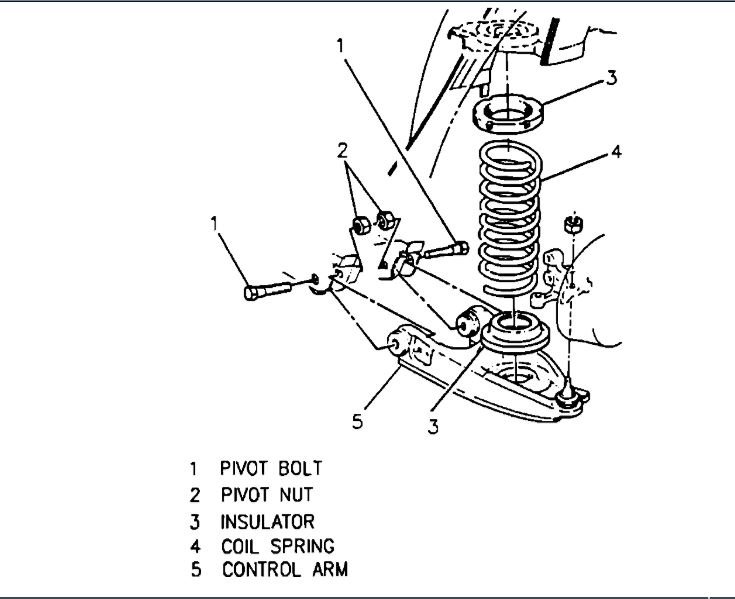Good morning.
Springs hold the car up, not the shocks. The air shocks you removed were an assist for additional weight in the rear seat.
It does sound like you have bad or possibly a broken rear coil spring. I would have them checked and replaced as needed.
Roy
procedure below and a picture
1. Support vehicle so the rear wheel and control arm hang free. Remove rear wheel.
2. Disconnect rear stabilizer bar from knuckle bracket.
3. Disconnect electronic level control height sensor link if removing right control arm.
4. Disconnect parking brake cable clip from frame if removing left control arm.
5. Place tool J-23028-01 in position to cradle control arm bushings, Fig. 3. Tool J-23028-01 should be secured to a suitable jack, otherwise, personal injury could result.
6. Raise jack to relieve tension from control arm pivot bolts.
7. Place a chain around spring and control for safety.
8. Remove rear control arm pivot bolt and nut, Fig. 4.
9. Slowly lower jack until front bolt and nut can be removed.
10. Remove coil spring. Do not apply force on lower arm and ball joint to remove spring. Maneuver spring to remove.
11. Reverse procedure to install, noting the following:
a. Replace spring insulators that are damaged or if vehicle has been in service for more than 50,000 miles
b. Install springs so that upper pigtail end of left spring faces rear of vehicle, or upper pigtail end of right spring faces front of vehicle when vehicle is at normal ride height.
C. Tighten suspension fasteners sufficiently to retain position of components, lower vehicle so that it rests on the wheels at normal ride height, then torque fasteners as follows: 1-Torque control arm pivot nuts to specifications 2-Torque control arm pivot bolts to specifications 3-Torque stabilizer support bolt to specifications. Failure to torque fasteners to specifications in listed sequence may adversely affect ride and handling.
Image (Click to make bigger)
Friday, October 26th, 2018 AT 3:50 AM



